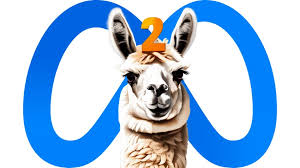The public’s attention has been drawn to recent advances in artificial intelligence (AI), especially in generative AI, which show how these technologies may open up new business and social possibilities.
One of Meta’s ideas is Llama 2, a huge new open-source language model.
Meta’s Llama 2 is taught with public data to power chatbots like OpenAI’s ChatGPT, Bing Chat, and others. Meta says that Llama 2, which was trained on a mix of freely available data, is better than earlier Llama models.
The model is easy to run and fine-tune because it has already been trained on AWS, Azure, and Hugging Face’s AI model hosting platforms. Click here to get it.
But how is Llama 2 different from other big language models? Let’s look at the way it works.
Read also: Meta launches Threads beta for Android users
Technical Information and How It Works
Llama 2 comes in two forms: Llama 2 and Llama-2-Chat. Llama-2-Chat has been made better so that people can talk back and forth. Both versions can be broken down even further into models with different levels of complexity: models with 7 billion parameters, 13 billion parameters, and 70 billion parameters. The models were trained on more than 1 million human comments and 2 trillion tokens, which is 40% more than the first Llama model.
Llama 2 has a context length of 4096, and during its training for Llama-Chat-2, it uses reinforcement learning from human input to make sure it is safe and helpful. Meta says that Llama 2 does better than other LLMs, like Falcon and MPT, on thinking, coding, proficiency, and knowledge tests.
Also, Llama 2 is optimised to run directly on Windows and on smartphones and PCs with Qualcomm’s Snapdragon on-device technology. This means that AI-powered apps that don’t rely on cloud services will be available starting in 2024.
“These new AI experiences on the device, which are powered by Snapdragon, can work in places with no connectivity or even in airplane mode.”
Security and Open-Source
The fact that Llama 2 is open-source is one of its most important features. Meta thinks that AI models can help everyone if they are made public. This change means that both business and research can use tools that would be hard to build and scale on their own. This opens up a lot of new ways to do research, experiment, and create.
Meta also focuses on safety and openness. Llama 2 has been “red-teamed,” which means that it has been tried for safety by creating hostile prompts to fine-tune the model from the inside and outside. Meta shows how the models are tested and changed, which makes the development process more open.
Conclusion
Llama 2 does its best to continue Meta’s point of view in the area of generative AI. Its better performance, open-source nature, and commitment to safety and transparency make Llama 2 a hopeful model for a wide range of applications. As more developers and researchers get access, we can expect to see a rise in new AI-powered solutions.
As we move forward, it will still be important to keep solving the problems and biases that AI models have. But Meta’s commitment to safety and honesty sets a good example for the business. With the release of Llama 2, we now have another tool for generative AI, and it is one that makes open access an ongoing promise.
